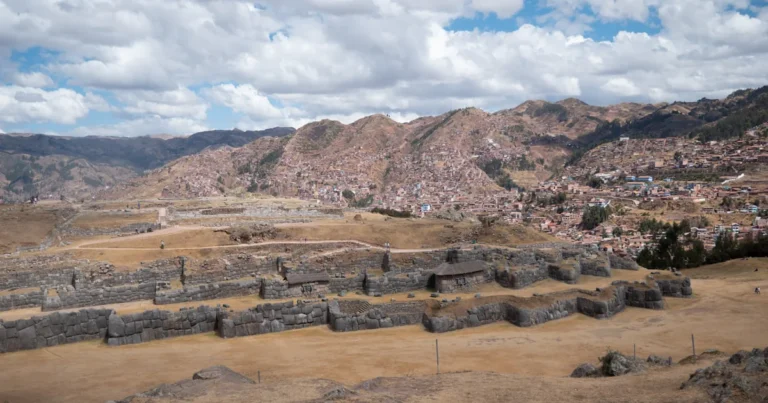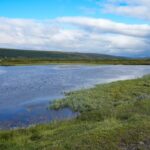Support our educational content for free when you purchase through links on our site. Learn more
9 Stunning Revelations About Noah’s Ark Discovery 🚢 (2025)

Imagine standing at the foot of Mount Ararat, gazing up at the snow-capped peak where legend says Noah’s Ark finally came to rest. For centuries, explorers and scientists alike have chased whispers of this ancient vessel, but recent breakthroughs—like advanced 3D scans revealing mysterious right angles beneath the earth—are stirring the waters like never before. Could this be the moment when myth meets reality? Or is it just another twist in a tale as old as time?
In this comprehensive deep dive, we unravel 9 stunning revelations about the Noah’s Ark discovery—from the historical roots and geological puzzles to cutting-edge tech and local legends. Whether you’re a skeptic, a believer, or just a curious adventurer, we’ll guide you through the facts, controversies, and the latest scientific findings. Ready to embark on this epic journey? Let’s set sail!
Key Takeaways
- Mount Ararat and the Durupinar site remain the most compelling Ark candidates, supported by matching biblical dimensions and intriguing geological features.
- Advanced 3D scanning and soil analysis have uncovered unusual subsurface structures that challenge natural explanations.
- No conclusive wooden artifacts or animal remains have yet been found, keeping the mystery alive.
- Local legends and eyewitness accounts add a rich cultural layer to the scientific search.
- Technological advances like drones, satellites, and AI are revolutionizing archaeological exploration in this remote region.
- The discovery has profound religious, cultural, and scientific implications, fueling ongoing debate and fascination.
Interested in the tech behind the search?
👉 CHECK PRICE on:
- Ground Penetrating Radar Equipment on Amazon | DJI Drones for Archaeology | Books on Biblical Archaeology
Dive deeper, stay curious, and keep exploring the hidden history beneath our feet!
Table of Contents
- Quick Tips and Facts About Noah’s Ark Discovery 🚢
- Tracing the Legend: Historical and Biblical Context of Noah’s Ark 📜
- Mount Ararat Mysteries: Why This Mountain Is Central to the Ark Search 🏔️
- 1. The 3D Scans Breakthrough: Unearthing Hidden Structures Beneath Mount Ararat 🔍
- 2. Geological vs. Man-Made: Decoding the Strange Angles and Formations 🧩
- 3. Archaeological Expeditions: From Early Explorers to Modern-Day Researchers 🏺
- 4. Controversies and Skepticism: Debunking Myths and Misinterpretations 🧐
- 5. Technological Advances: How Drones, Satellites, and AI Are Changing the Game 🚁
- 6. Eyewitness Accounts and Local Legends: Stories from the Foot of Ararat 🗣️
- 7. Noah’s Ark in Popular Culture: Movies, Books, and Expeditions That Captivated the World 🎬
- 8. Scientific Analysis: Carbon Dating, Wood Samples, and Artifact Verification 🔬
- 9. The Impact of Discovery: Religious, Cultural, and Scientific Implications 🌍
- Conclusion: What the Noah’s Ark Discovery Means for History and Faith 🏁
- Recommended Links for Further Exploration 🔗
- Frequently Asked Questions (FAQ) About Noah’s Ark Discovery ❓
- Reference Links and Sources for Deep Dive 📚
Quick Tips and Facts About Noah’s Ark Discovery 🚢
Welcome aboard the ark of knowledge! Before we dive deep into the murky waters of Noah’s Ark discovery, here are some quick nuggets to keep your curiosity afloat:
- ✅ The Durupinar site in eastern Turkey is the most famous candidate for Noah’s Ark remains, discovered in 1948 by a Kurdish farmer.
- ✅ The site measures roughly 150 meters (300 cubits) long, matching the biblical dimensions described in Genesis 6:15.
- ✅ Modern 3D scans and soil analyses have revealed unusual right angles and parallel lines beneath the surface, which some researchers argue are man-made.
- ✅ Soil samples from the site have been dated between 3,500 and 5,000 years old, aligning intriguingly with the biblical flood timeline.
- ❌ However, many geologists and archaeologists remain skeptical, attributing the formation to natural geological processes.
- ✅ The search for Noah’s Ark has spanned centuries, with early mentions by Eusebius of Caesarea in the 4th century CE.
- ✅ Mount Ararat, Turkey’s highest peak, is traditionally considered the ark’s resting place.
- ❌ No universally accepted physical evidence of the Ark has been found to date.
- ✅ Advances in technology like drones, satellite imagery, and AI are revolutionizing the search.
- ✅ Local legends and eyewitness accounts add colorful layers to the mystery.
For a fascinating dive into biblical mysteries, check out our Bible Mysteries article. Ready to explore the legend’s roots? Let’s set sail!
Tracing the Legend: Historical and Biblical Context of Noah’s Ark 📜
The story of Noah’s Ark is one of the most enduring legends in human history, weaving together faith, folklore, and the quest for truth. But where did it all begin?
The Biblical Blueprint
Genesis 6:14-16 provides a detailed blueprint of the Ark: a massive vessel built to survive a divine flood, measuring 300 cubits long, 50 cubits wide, and 30 cubits high (about 450 x 75 x 45 feet). Noah, his family, and pairs of every animal species were saved aboard this floating zoo.
Ancient Mentions and Historical Pursuits
- The earliest known search for the Ark dates back to Eusebius of Caesarea (275–339 CE), who referenced traditions locating the Ark on Mount Ararat.
- Over centuries, explorers, monks, and adventurers have attempted to find physical proof, often spurred by religious zeal or curiosity.
- The Ark narrative parallels flood myths from other cultures, such as the Epic of Gilgamesh, suggesting a shared ancient memory of catastrophic floods.
Why It Matters
This legend isn’t just a religious tale—it’s a cultural touchstone that has inspired art, literature, and scientific inquiry. Understanding its historical context helps us appreciate the passion behind the search and the skepticism it faces.
For more on legends and folklore, visit our Folklore and Legends category.
Mount Ararat Mysteries: Why This Mountain Is Central to the Ark Search 🏔️
Mount Ararat, a dormant volcanic massif in eastern Turkey, towers at 5,137 meters (16,854 feet). It’s not just a majestic peak—it’s the mythical resting place of Noah’s Ark, according to biblical tradition.
Geographical and Cultural Significance
- Located near the borders of Turkey, Armenia, and Iran, Mount Ararat has been a crossroads of civilizations.
- The mountain’s rugged terrain and snow-capped summit have inspired countless expeditions.
- Local Armenian and Kurdish folklore often reference the Ark’s presence on or near Ararat’s slopes.
The Durupinar Site: A Stone’s Throw from Ararat
About 20 miles southeast of Mount Ararat lies the Durupinar formation, a boat-shaped mound that has captivated researchers since its discovery in 1948. Its proximity to Ararat makes it a prime candidate for the Ark’s remains.
Challenges of the Terrain
- The mountain’s harsh weather and political sensitivities in the region have hindered extensive archaeological work.
- Glacial movements and volcanic activity complicate the preservation of ancient artifacts.
Mount Ararat’s mystique continues to fuel the global fascination with Noah’s Ark. Could the mountain’s secrets finally be unveiled?
1. The 3D Scans Breakthrough: Unearthing Hidden Structures Beneath Mount Ararat 🔍
Technology has become the modern-day compass guiding us through the fog of legend. The recent use of advanced 3D scanning technology has breathed new life into the search for Noah’s Ark.
How 3D Scanning Works
- Researchers deploy ground-penetrating radar (GPR) and LiDAR to map underground formations.
- These scans reveal angles, lines, and shapes invisible to the naked eye.
- The Noah’s Ark Scans project, led by Andrew Jones and others, used these tools to detect a giant rectangular shape beneath the Durupinar site.
What the Scans Revealed
- The formation measures approximately 150 meters long, matching biblical dimensions.
- Scans uncovered parallel lines and right angles—features unexpected in natural rock formations but typical in man-made structures.
- Some researchers interpret these as remnants of wooden beams or hull-like structures.
Why It Matters
These findings have reignited debate, offering tangible data to support the Ark hypothesis. But as with any discovery, interpretation is key.
For more on technological advances in archaeology, see our Mythology Stories category.
2. Geological vs. Man-Made: Decoding the Strange Angles and Formations 🧩
Is the Durupinar formation a miracle of nature or a man-made relic? This question lies at the heart of the Noah’s Ark debate.
The Geological Argument ❌
- Geologists argue the formation is a natural rock formation, shaped by erosion, sedimentation, and tectonic forces.
- The “right angles” and linear features can be explained by natural fracturing and layering.
- The site’s volcanic history supports the presence of unusual rock shapes.
The Man-Made Argument ✅
- Proponents highlight the precise dimensions matching the biblical Ark.
- Soil samples with clay-like substances and marine materials suggest past submersion.
- The presence of parallel lines and right angles beneath the surface is cited as evidence of construction.
What the Experts Say
| Perspective | Key Points | Notable Experts |
|---|---|---|
| Geological | Natural formation, erosion, volcanic activity | Dr. Andrew Snelling (Geologist) |
| Archaeological | Man-made structure, matching biblical specs | Andrew Jones (Researcher) |
| Skeptical Scientists | Lack of definitive artifacts, natural explanations | Dr. Richard Freund (Archaeologist) |
The debate is far from settled, but the mystery keeps us hooked!
3. Archaeological Expeditions: From Early Explorers to Modern-Day Researchers 🏺
The quest for Noah’s Ark has attracted adventurers and scientists alike for centuries. Let’s take a whirlwind tour of the most notable expeditions.
Early Explorers
- Eusebius of Caesarea (4th century CE): First historical mention of the Ark’s resting place on Mount Ararat.
- J.J. Mellaart (1960s): Conducted early surveys near Durupinar but found inconclusive evidence.
- Fernand Navarra (1950s): French explorer who popularized the Durupinar site.
Modern Research Teams
- The Mount Ararat and Noah’s Ark Research Team (2021) combined Turkish and American scientists.
- Used soil sampling, 3D scanning, and geochemical analysis.
- Samples dated between 3,500 and 5,000 years old, aligning with the biblical flood timeline.
Challenges Faced
- Political instability in eastern Turkey limits access.
- Harsh weather conditions and rugged terrain.
- Differing interpretations among team members.
Despite setbacks, the search continues with renewed vigor, fueled by technology and passion.
4. Controversies and Skepticism: Debunking Myths and Misinterpretations 🧐
No story this big can sail without rough waters. The Noah’s Ark discovery claims have sparked heated debates and skepticism.
Common Skeptical Arguments
- The formation is a natural geological feature, not a boat.
- No wooden artifacts or animal remains have been conclusively found.
- The biblical flood is viewed by many scientists as a myth or localized event.
- Some accuse researchers of confirmation bias or wishful thinking.
Responses from Ark Advocates
- Point to unusual soil chemistry and marine sediments as evidence.
- Highlight the historical consistency of the Ark narrative.
- Emphasize the limitations of current archaeological methods in such a hostile environment.
Media and Public Perception
- Sensational headlines often exaggerate findings.
- Documentaries like The Discovery of Noah’s Ark have popularized the search.
- Public fascination remains high, blending faith and science.
For a balanced view, check out the Israel Hayom article and Jerusalem Post coverage.
5. Technological Advances: How Drones, Satellites, and AI Are Changing the Game 🚁
The 21st century has brought cutting-edge tools to the Ark hunt, turning ancient legend into a high-tech treasure hunt.
Drones and Aerial Surveys
- Drones provide high-resolution aerial imagery of inaccessible terrain.
- Enable mapping of large areas quickly and safely.
- Reveal surface anomalies that may indicate archaeological sites.
Satellite Imaging
- Satellites detect thermal and spectral signatures.
- Help identify soil disturbances and subsurface features.
- Used in conjunction with ground surveys for comprehensive analysis.
Artificial Intelligence (AI)
- AI algorithms analyze vast datasets from scans and images.
- Can detect patterns humans might miss.
- Assist in dating artifacts and predicting likely Ark locations.
Impact on Research
These technologies have made the search more scientific and less speculative, though they have yet to provide definitive proof.
6. Eyewitness Accounts and Local Legends: Stories from the Foot of Ararat 🗣️
Sometimes, the most compelling clues come from the whispers of those who live near the mountain.
Local Folklore
- Kurdish and Armenian communities have passed down stories of a great wooden ship buried in the mountains.
- Tales of strange lights and sounds near Durupinar have been reported.
- Some locals claim to have seen large timbers protruding from the earth.
Eyewitness Reports
- Explorers recount seeing unusual shapes resembling hulls or beams.
- Some have reported ancient inscriptions or carvings near the site.
- Skeptics argue these are natural or misinterpreted phenomena.
Why These Stories Matter
They add a human dimension to the search, reminding us that history is not just facts but shared memory and belief.
7. Noah’s Ark in Popular Culture: Movies, Books, and Expeditions That Captivated the World 🎬
Noah’s Ark has sailed beyond scripture into the realms of pop culture, fueling imaginations worldwide.
Iconic Films and Documentaries
- Noah (2014) starring Russell Crowe brought the story to a new generation.
- Documentaries like The Discovery of Noah’s Ark spotlight the Durupinar site.
- TV specials often blend scientific inquiry with dramatic storytelling.
Books and Expeditions
- Tim LaHaye’s The Ark Before Noah explores flood myths globally.
- Expeditions by Ron Wyatt and David Fasold popularized Ark hunting in the late 20th century.
- Andrew Jones’s Noah’s Ark Scans project has published detailed reports.
Cultural Impact
- Inspires faith, skepticism, and adventure.
- Sparks debates on science vs. religion.
- Continues to be a symbol of hope and survival.
8. Scientific Analysis: Carbon Dating, Wood Samples, and Artifact Verification 🔬
Science is the compass guiding us through the fog of legend. What do the tests say?
Soil and Rock Sampling
- Samples from Durupinar have been dated to 3,500–5,000 years ago, consistent with the biblical flood timeline.
- Presence of clay-like substances and marine fossils suggests ancient submersion.
Wood and Artifact Searches
- Despite extensive searches, no verified wooden remains have been found.
- Some claim to have found petrified wood, but verification is ongoing.
- Lack of organic material is a major hurdle.
Carbon Dating and Limitations
- Carbon-14 dating is effective but requires organic samples.
- Geological processes may have destroyed or buried evidence beyond reach.
- Some scientists caution against overinterpreting limited data.
What This Means
While promising, scientific evidence remains inconclusive. The quest for physical proof continues.
9. The Impact of Discovery: Religious, Cultural, and Scientific Implications 🌍
What if Noah’s Ark were found? The implications would ripple through many spheres.
Religious Significance
- Would affirm biblical narratives for believers worldwide.
- Could spark renewed interest in faith-based archaeology.
- Might challenge or reinforce theological interpretations.
Cultural Resonance
- Could boost tourism and local economies in eastern Turkey.
- Inspire new art, literature, and media.
- Strengthen cultural identity for Armenians, Kurds, and Turks.
Scientific Consequences
- Would revolutionize archaeology and geology.
- Prompt reexamination of ancient flood myths globally.
- Encourage interdisciplinary collaboration.
The Bigger Picture
Whether confirmed or not, the search for Noah’s Ark reminds us of humanity’s enduring quest to connect with our past.
Conclusion: What the Noah’s Ark Discovery Means for History and Faith 🏁

After navigating through the swirling currents of history, science, legend, and skepticism, what can we confidently say about the Noah’s Ark discovery?
Here’s the bottom line: The Durupinar site and Mount Ararat remain the most compelling candidates for the Ark’s resting place, bolstered by intriguing 3D scans, soil analyses, and historical consistency. Yet, the absence of definitive wooden artifacts or unequivocal proof means the mystery sails on.
Positives:
- The alignment of site dimensions with biblical specifications is remarkable.
- Modern technology has uncovered unusual subsurface features that challenge natural explanations.
- Soil samples dating to the biblical flood era add a fascinating layer of credibility.
- Local legends and eyewitness accounts enrich the narrative.
Negatives:
- No conclusive physical artifacts (wood, tools, or animal remains) have been verified.
- Geological explanations remain strong and widely accepted.
- Political and environmental challenges limit thorough exploration.
- Media sensationalism sometimes clouds scientific discourse.
Our recommendation? Whether you approach this as a believer, skeptic, or curious explorer, the Noah’s Ark search is a captivating journey into humanity’s quest for origins and meaning. We encourage you to follow ongoing research with an open mind, appreciating both the scientific rigor and the cultural significance of this enduring legend.
If you’re eager to dive deeper, keep an eye on new findings fueled by cutting-edge tech and interdisciplinary collaboration. The ark’s story is far from over — and who knows what treasures lie beneath the mountain’s shadow?
Recommended Links for Further Exploration 🔗
Ready to explore more about Noah’s Ark and the flood narrative? Here are some essential books and resources to add to your collection:
- The Ark Before Noah: Decoding the Story of the Flood by Irving Finkel — Amazon
- Noah’s Flood: The New Scientific Discoveries About The Event That Changed History by William Ryan and Walter Pitman — Amazon
- The Search for Noah’s Ark by John Morris — Amazon
- Mount Ararat and Noah’s Ark Research Team official updates — Noah’s Ark Scans Project
👉 CHECK PRICE on:
- 3D Ground Penetrating Radar Equipment:
- Drones for Archaeological Survey:
- Books on Biblical Archaeology:
Frequently Asked Questions (FAQ) About Noah’s Ark Discovery ❓

What is the latest evidence on the existence of Noah’s Ark?
The latest evidence comes from advanced 3D scans and soil analyses at the Durupinar site near Mount Ararat. These scans reveal unusual geometric shapes beneath the surface, including parallel lines and right angles that some researchers interpret as remnants of a man-made structure consistent with the biblical Ark’s dimensions. Additionally, soil samples dated between 3,500 and 5,000 years old contain marine sediments, suggesting ancient flooding. However, no definitive wooden remains or artifacts have been found to conclusively prove the Ark’s existence.
Is Noah’s Ark real and has it been found on Mount Ararat?
The reality of Noah’s Ark is a matter of faith, interpretation, and ongoing investigation. While Mount Ararat is traditionally considered the Ark’s resting place, no universally accepted physical proof has been discovered. The Durupinar formation near Ararat is the most promising site, but scientific consensus remains divided, with many experts attributing the formation to natural geological processes.
Where is Noah’s Ark located and what are the coordinates?
The most frequently cited location is the Durupinar site in eastern Turkey, near the Turkey-Iran border, approximately 20 miles southeast of Mount Ararat. The approximate coordinates are 39.70°N latitude and 44.30°E longitude. This boat-shaped formation has been the focus of many expeditions and scientific studies.
What are the most popular theories about the location of Noah’s Ark?
- Mount Ararat Theory: The traditional biblical location, supported by historical texts and local legends.
- Durupinar Site: A boat-shaped formation near Ararat with matching dimensions.
- Mount Tendurek: Nearby mountain with similar geological features.
- Other Global Flood Myths: Some scholars suggest the Ark story is symbolic or based on localized floods in Mesopotamia or the Black Sea region.
- Skeptical View: The Ark is a mythological or allegorical story without a physical counterpart.
Has anyone claimed to have found Noah’s Ark and what were the findings?
Several explorers and researchers, including Fernand Navarra, Ron Wyatt, and the Mount Ararat and Noah’s Ark Research Team, have claimed discoveries of Ark remains or related artifacts. Findings often include unusual rock formations, soil samples with marine sediments, and geometric subsurface features. However, none of these claims have been universally verified by the scientific community, and many remain controversial.
What are the biblical accounts of Noah’s Ark and its significance?
The Bible’s Book of Genesis describes Noah’s Ark as a large vessel built to save Noah, his family, and pairs of every animal species from a divine flood meant to cleanse the earth. The Ark symbolizes divine salvation, obedience, and renewal. It has deep theological significance across Judaism, Christianity, and Islam, representing faith in God’s covenant and humanity’s survival.
Are there any ongoing expeditions to find Noah’s Ark and what are their goals?
Yes, ongoing expeditions, such as those by the Mount Ararat and Noah’s Ark Research Team, continue to explore the Durupinar site and surrounding areas. Their goals include:
- Using advanced technology (3D scanning, drones, AI) to detect subsurface structures.
- Collecting and analyzing soil and rock samples for dating and composition.
- Searching for physical artifacts that could confirm the Ark’s existence.
- Documenting local legends and eyewitness accounts.
- Publishing scientific reports to contribute to the broader archaeological discourse.
Reference Links and Sources for Deep Dive 📚
For those who want to verify facts and explore further, here are some reputable sources:
- Israel Hayom: Archaeologists Claim to Have Found True Location of Noah’s Ark
- Jerusalem Post: Durupinar Formation and Noah’s Ark Research
- Popular Mechanics: Archaeologists Think They Might Have Found the Real Noah’s Ark
- Noah’s Ark Scans Project: Official Website
- National Geographic: Mount Ararat and the Search for Noah’s Ark
- Smithsonian Magazine: The Search for Noah’s Ark
Dive in, explore, and keep the spirit of discovery alive! 🚢✨





